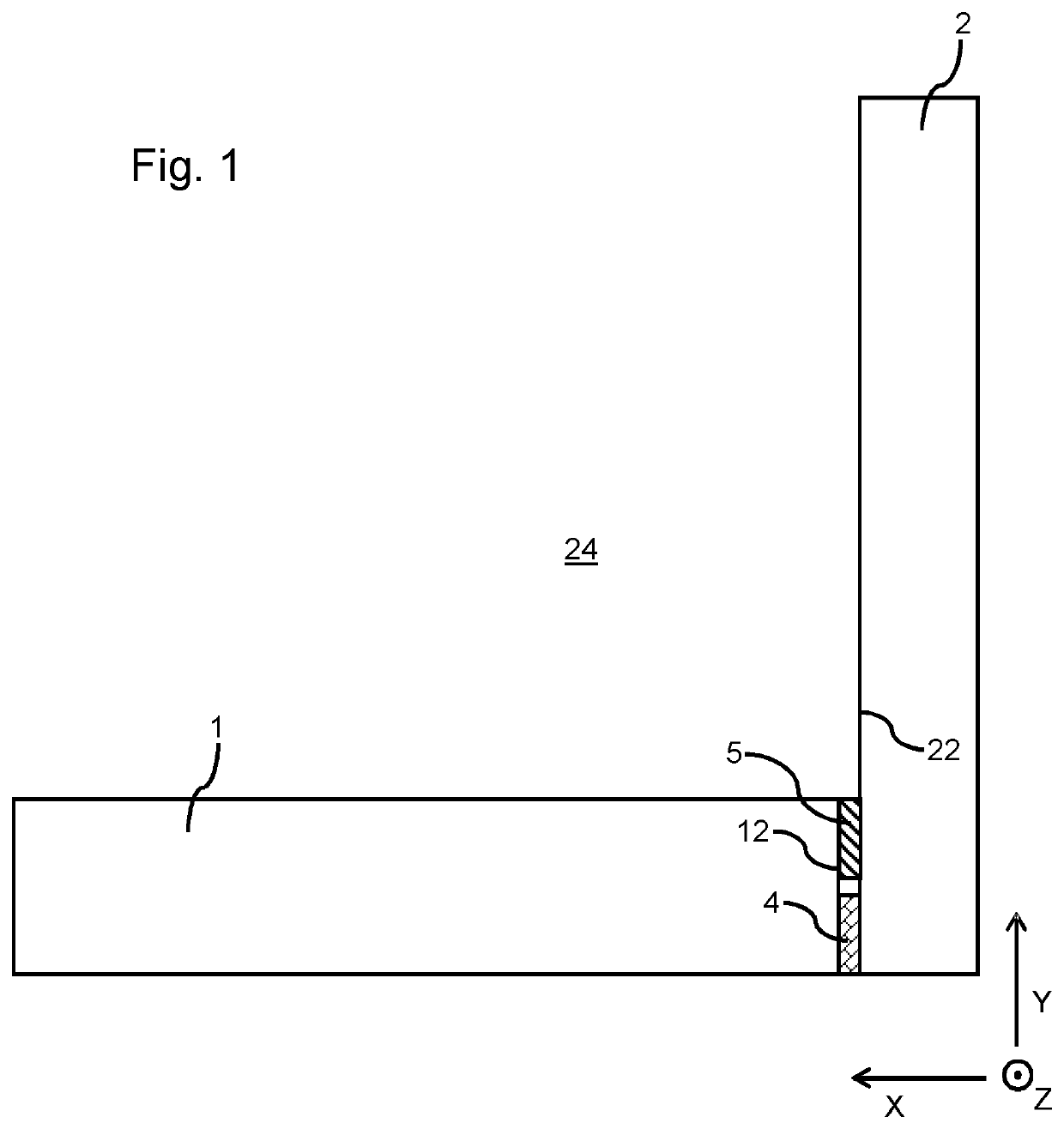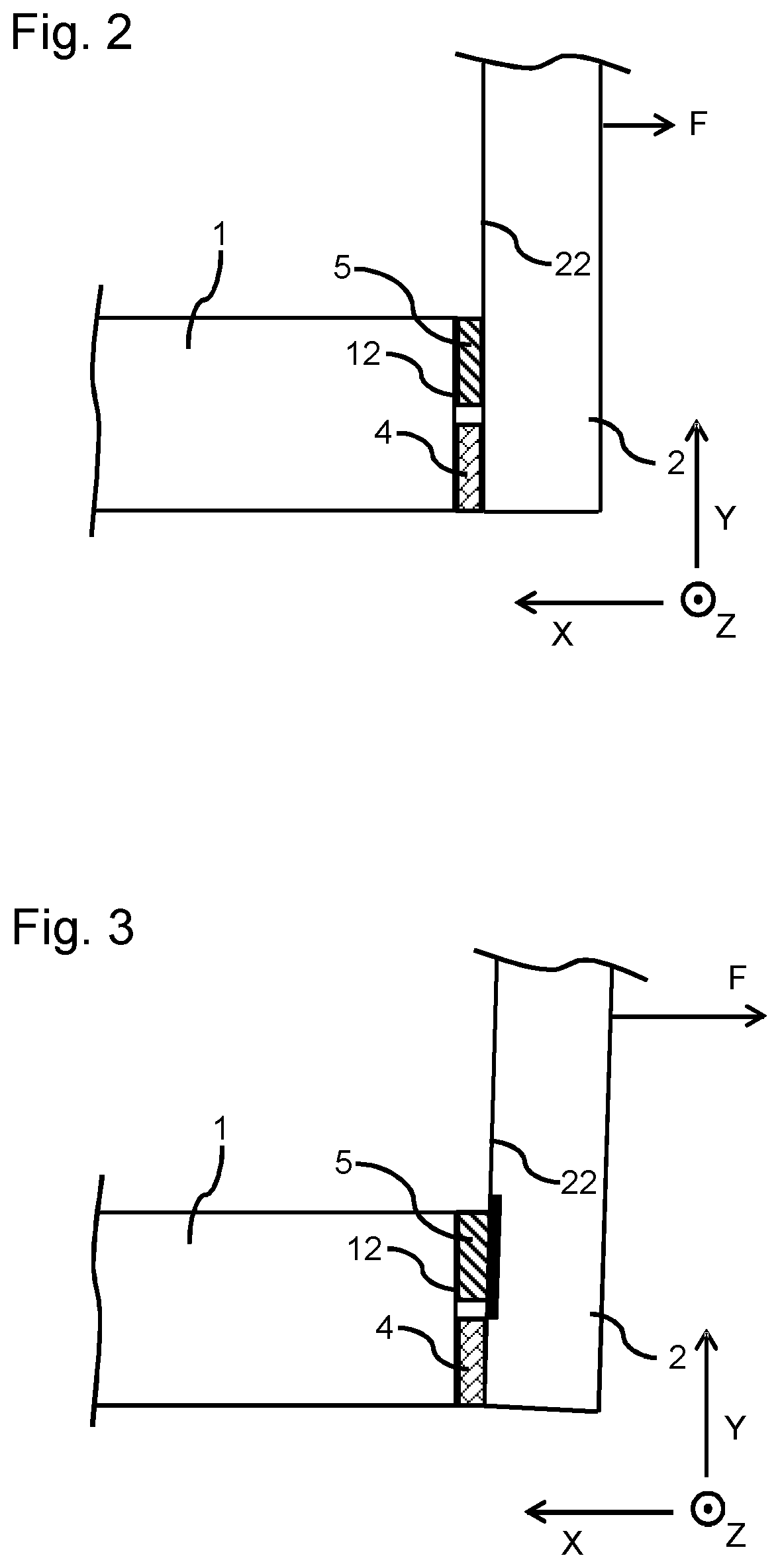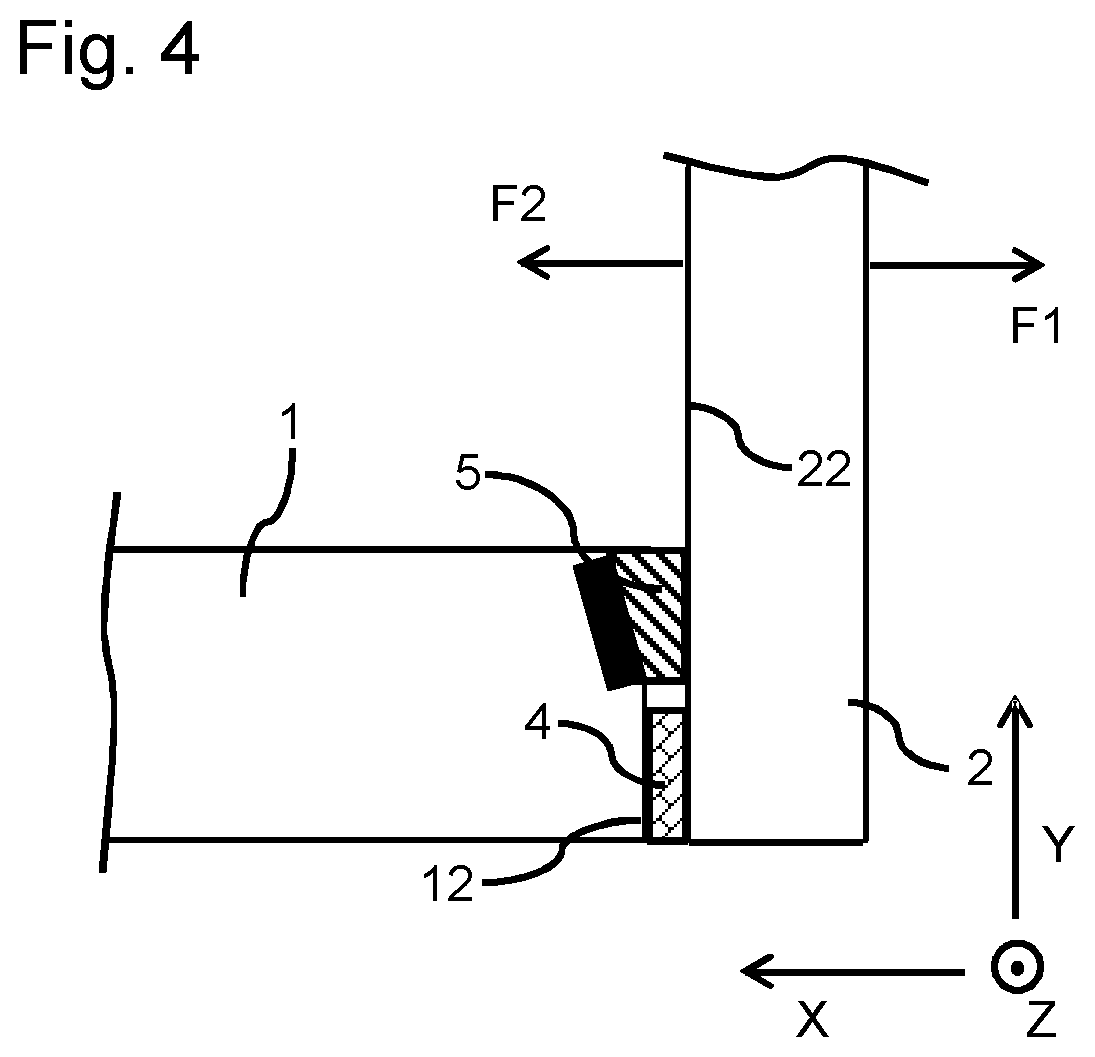Assembly of a first and second panel
a technology of first and second panels, applied in the direction of mechanical devices, transportation and packaging, fastening means, etc., can solve the problems that the failure of the joint or the failure of the different panels itself cannot be avoided
- Summary
- Abstract
- Description
- Claims
- Application Information
AI Technical Summary
Benefits of technology
Problems solved by technology
Method used
Image
Examples
Embodiment Construction
[0039]An elastic modulus (also known as modulus of elasticity) is a quantity that measures an object or substance's resistance to being deformed elastically (i.e., non-permanently) when a stress is applied to it. The elastic modulus of an object is defined as the slope of its stress-strain curve in the elastic deformation region: A stiffer material will have a higher elastic modulus. An elastic modulus A has the form:
λ=stress / strain (1)
[0040]where stress is the force causing the deformation divided by the area to which the force is applied and strain is the ratio of the change in some parameter caused by the deformation to the original value of the parameter. If stress is measured in Pascals, then since strain is a dimensionless quantity, the units of A will be Pascals as well.
[0041]FIG. 1 schematically shows a cross section of an assembly according to an embodiment of the invention. The assembly comprises a first panel 1 bonded to a second panel 2. A head end 12 of the first panel...
PUM
 Login to View More
Login to View More Abstract
Description
Claims
Application Information
 Login to View More
Login to View More - R&D
- Intellectual Property
- Life Sciences
- Materials
- Tech Scout
- Unparalleled Data Quality
- Higher Quality Content
- 60% Fewer Hallucinations
Browse by: Latest US Patents, China's latest patents, Technical Efficacy Thesaurus, Application Domain, Technology Topic, Popular Technical Reports.
© 2025 PatSnap. All rights reserved.Legal|Privacy policy|Modern Slavery Act Transparency Statement|Sitemap|About US| Contact US: help@patsnap.com



